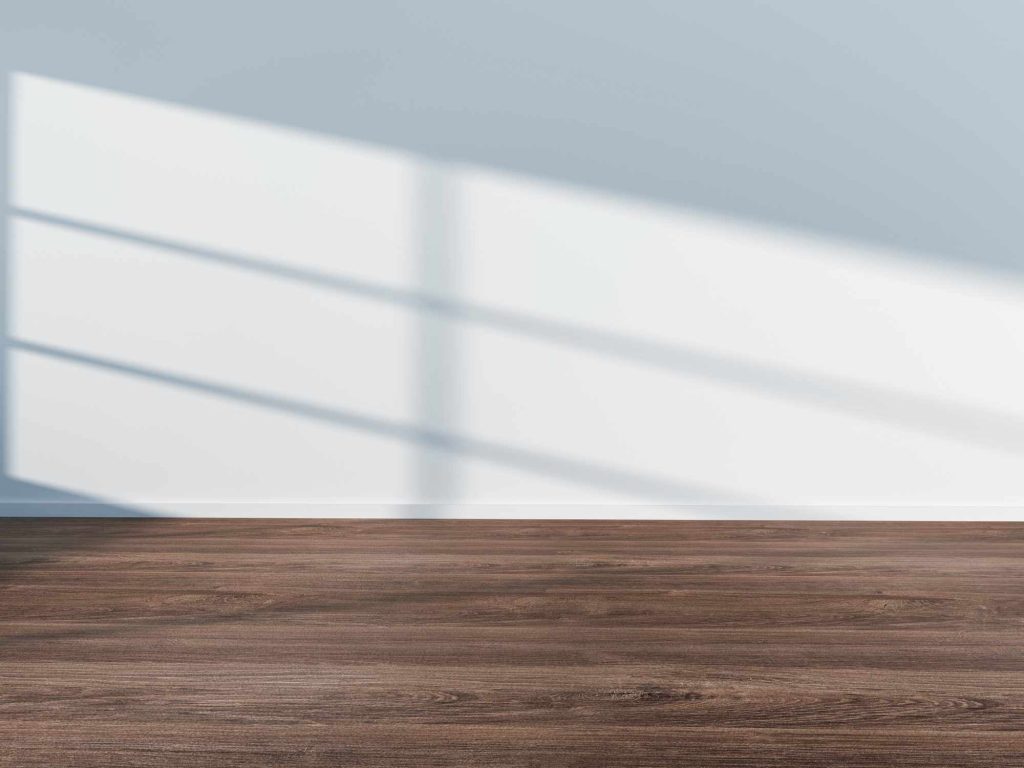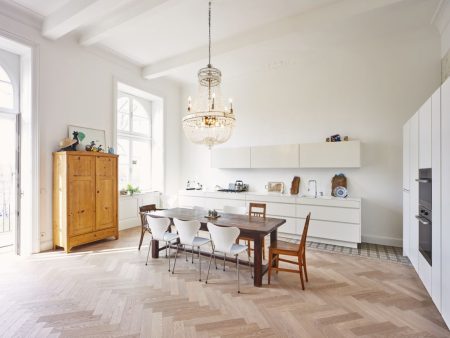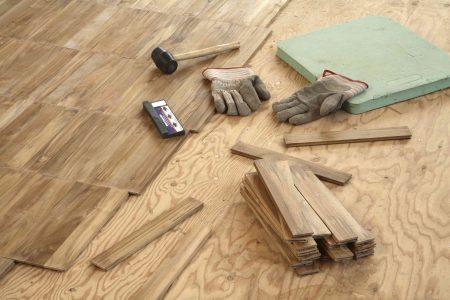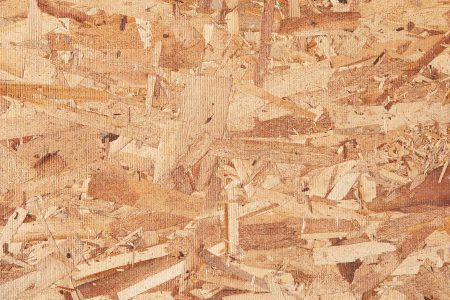Concrete has long been a popular exterior hardscape for patios and porches, and it’s finding its way into many rooms indoors, too. Basements aren’t the only room with concrete floors: dining rooms, living rooms, kitchens, and hallways benefit from concrete’s durability and its nearly maintenance-free nature.
If concrete’s original gray color isn’t in your design plans, concrete can be stained to look like wood. With concrete stains and dark and light highlights, concrete can be realistically stained to look like wood planks.
Before You Begin
The secret to staining concrete so it looks like wood is color-layering. Applying color in three or more gradients adds depth and creates a faux wood grain. In this project, a solid light-brown stain is used as an overall base coat. A darker brown stain, applied with a rough-bristle chip brush, creates the wood grain look. The final color—and the darkest—is used in extreme moderation. Applied from a squeeze bottle and worked with plastic tools, this color adds the look of deep cracks and dimension to the faux boards.
When to Stain Concrete to Look Like Wood
Stain concrete when the surface temperature of the concrete is between 50° F and 90° F. The surface of the concrete should be dry. Stain manufacturers usually recommend that stain be applied no sooner than 30 days after the concrete has been poured. Some concrete artisans, though, like to apply stain when the concrete is hard enough to walk on but still wet, as this creates more vibrant colors.
Safety Considerations
Wear eye protection and gloves when using the concrete etcher. Keep the area well-ventilated.
What You’ll Need
Equipment / Tools
- Wood graining tools, set
- Putty knife
- Margin trowel
- Old screwdriver
- Sprayer or watering can
- Paint roller
- Extension pole
- Chip brushes
- Squeeze bottle
- Broom
- Pressure washer (for outdoors)
Materials
- 1 gallon solid concrete stain color, beige or light-brown
- 1 gallon semi-transparent concrete stain color, brown
- 1 quart solid dark-brown or black stain
- Fiber-infused tape (1/4-inch) or painter’s tape
- Concrete patching compound
- Concrete etcher
- Paint tray and tray liners
Instructions
-
Clean the Concrete
Sweep off the concrete with a broom. If the concrete is outdoors, follow by washing with a pressure washer.
-
Scrape or Remove Obstructions
Caulk, paint, or coatings will repel concrete stain and must be removed. Use the putty knife to scrape off large areas of caulk or paint.
Floor transitions, baseboards, quarter-round, floor drain covers, and anything else that will obstruct the staining process should be removed as well.
-
Apply Concrete Etcher
Concrete etcher is a phosphoric acid detergent blend. Follow the product’s dilution instructions, typically ranging from 25-percent dilution for light etching to 50-percent for heavy-duty etching.
Dampen the concrete. Apply the etching solution with a sprayer or watering can, following with a brush or broom. When the product stops bubbling, rinse two or three times with clean water. Let the concrete thoroughly dry.
-
Fix Cracks in the Concrete
Fix cracks in the concrete by first cleaning out and widening the crack with an old screwdriver. Then repair the crack with concrete patching compound. Let the compound cure for 4 to 6 hours.
-
Tape a Wood Plank Pattern
Apply fiber tape or thin strips of painter’s tape to the concrete in a wood plank pattern. For realism, stagger the ends of the boards and create boards of different sizes.
-
Apply the Base Stain
Pour light-brown or beige solid stain into a lined paint tray. Roll out the stain over the floor, using the paint roller and extension pole. Avoid pooling the product on the floor.
-
Remove the Tape
Wait about an hour for the base stain to dry. Remove the tape by pulling upward at a 90-degree angle to the floor.
-
Apply the Semi-Transparent Stain
Using a chip brush, brush a darker semi-transparent stain onto the base stain. It is important to remain within the lines, treating each section as if it were a wood plank. Running over the lines obliterates the faux seams. Create streaks that resemble wood grain.
-
Add Dark Streaks
Fill the squeeze bottle with dark-brown or black stain diluted with water. Apply thin lines of stain running in the direction of the previous streaks, two or three lines per faux board. Work the streaks into the concrete with the plastic wood graining tools.
When to Call a Professional
Physical texture can be added to the concrete either in the initial pour stage with stamping tools or retroactively with a fluid concrete overlay product. For this, call an experienced concrete contractor.
Read the full article here














